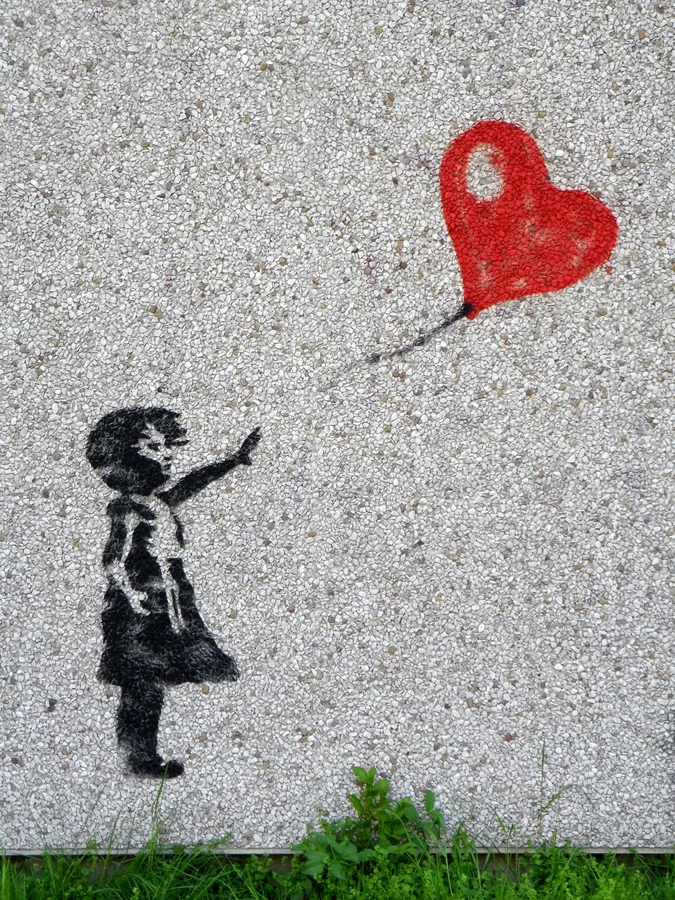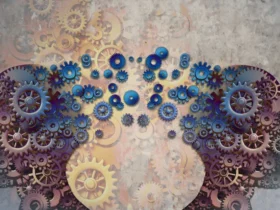The Enneagram is a personality framework that identifies nine different personality types, each with its own set of core motivations, fears, and desires. One aspect of the Enneagram that is often overlooked is the role that childhood experiences play in shaping an individual’s personality type.
In this post, we will explore the childhood wounds of each Enneagram type and provide guidance on how to heal them. By understanding the root causes of these wounds and the impact they have on individuals, we can help Enneagram types lead more fulfilling lives.
Enneagram Type 1 – The Perfectionist
Enneagram Type 1s are driven by a desire to be perfect and to do what is right. This desire is often rooted in childhood experiences where they felt that they needed to be perfect to gain love or acceptance. The childhood wounds of Enneagram Type 1s can manifest in several ways:
- Inner Critic – Enneagram Type 1s have a critical inner voice that tells them they are not good enough. This voice may have developed in childhood from parents or caregivers who were highly critical or demanding.
- Moral Authority – Enneagram Type 1s may feel a sense of responsibility to maintain order or justice, which can be traced back to childhood experiences where they were expected to take on this role.
To heal the childhood wounds of Enneagram Type 1s, they may need to:
- Practice self-compassion – Enneagram Type 1s may struggle with self-compassion and may need to learn to be kind and understanding toward themselves.
- Identify triggers – Enneagram Type 1s may have certain triggers that activate their inner critic, such as making a mistake or receiving criticism. Identifying these triggers and learning to manage them can help Enneagram Type 1s feel more in control of their critical voice.
- Challenge the critical voice – Enneagram Type 1s may need to challenge the validity of their critical voice by examining the evidence for and against their thoughts. They may need to question whether their thoughts are helpful or accurate.
- Cultivate self-awareness – Enneagram Type 1s may need to cultivate self-awareness and notice when their critical voice is activated. They may need to learn to step back and observe their thoughts and feelings without judgment.
Enneagram Type 2 – The Helper
Enneagram Type 2s are driven by a desire to be needed and to help others. This desire is often rooted in childhood experiences where they learned that their worth was tied to their ability to help others. The childhood wounds of Enneagram Type 2s can manifest in several ways:
- Need for Validation – Enneagram Type 2s may have a strong need for validation and may struggle with feelings of worthlessness if they do not receive it. This need for validation may stem from childhood experiences where they felt that their worth was tied to their ability to help others.
- Fear of Rejection – Enneagram Type 2s may have a fear of rejection and may go to great lengths to avoid it. This fear may have developed in childhood from experiences where they felt rejected or abandoned.
To heal the childhood wounds of Enneagram Type 2s, they may need to:
- Develop self-worth – Enneagram Type 2s may need to learn that their worth is not tied to their ability to help others. They may need to develop a sense of self-worth that is independent of their actions.
- Practice self-care – Enneagram Type 2s may need to learn to prioritize their own needs and engage in activities that bring them joy or relaxation.
- Cultivate healthy relationships – Enneagram Type 2s may need to learn to cultivate relationships that are based on mutual support and respect rather than the need to be needed. They may need to establish healthy boundaries and learn to say no when necessary.
- Identify and manage triggers – Enneagram Type 2s may have certain triggers that activate their need for validation or fear of rejection. Identifying these triggers and learning to manage them can help Enneagram Type 2s feel more in control of their emotions and behaviors.
Enneagram Type 3 – The Achiever
Enneagram Type 3s are driven by a desire to achieve success and to be recognized for their accomplishments. This desire is often rooted in childhood experiences where they learned that their worth was tied to their achievements. The childhood wounds of Enneagram Type 3s can manifest in several ways:
- Fear of Failure – Enneagram Type 3s may have a strong fear of failure and may go to great lengths to avoid it. This fear may have developed in childhood from experiences where they felt that their worth was tied to their achievements.
- Image Consciousness – Enneagram Type 3s may be highly focused on their image and may prioritize their appearance or reputation over their own needs or values. This focus on image may stem from childhood experiences where they learned that their worth was tied to how they appeared to others.
To heal the childhood wounds of Enneagram Type 3s, they may need to:
- Develop a sense of self-worth – Enneagram Type 3s may need to learn that their worth is not tied to their achievements or image. They may need to develop a sense of self-worth that is independent of external factors.
- Practice self-acceptance – Enneagram Type 3s may need to learn to accept themselves for who they are, rather than who they think they should be. They may need to embrace their vulnerabilities and learn to be authentic with themselves and others.
- Identify and manage triggers – Enneagram Type 3s may have certain triggers that activate their fear of failure or image consciousness. Identifying these triggers and learning to manage them can help Enneagram Type 3s feel more in control of their behaviors and emotions.
- Cultivate meaningful relationships – Enneagram Type 3s may need to learn to cultivate relationships that are based on authenticity and mutual support, rather than the need for recognition or achievement.
Enneagram Type 4 – The Individualist
Enneagram Type 4s are driven by a desire to be unique and to express their emotions and creativity. This desire is often rooted in childhood experiences where they felt different or misunderstood. The childhood wounds of Enneagram Type 4s can manifest in several ways:
- Feelings of Shame – Enneagram Type 4s may struggle with feelings of shame or inadequacy and may believe that there is something fundamentally wrong with them. These feelings may stem from childhood experiences where they felt different or misunderstood.
- Longing for Connection – Enneagram Type 4s may have a deep longing for connection and may feel that they are inherently disconnected from others. This longing may stem from childhood experiences where they felt isolated or alone.
To heal the childhood wounds of Enneagram Type 4s, they may need to:
- Practice self-acceptance – Enneagram Type 4s may need to learn to accept themselves for who they are, rather than who they think they should be. They may need to embrace their emotions and creativity and learn to express themselves authentically.
- Identify and challenge negative beliefs – Enneagram Type 4s may have negative beliefs about themselves that contribute to their feelings of shame or inadequacy. Identifying and challenging these beliefs can help Enneagram Type 4s develop a more positive self-image.
- Cultivate meaningful relationships – Enneagram Type 4s may need to learn to cultivate relationships that are based on authenticity and connection, rather than the need to be unique. They may need to work on developing empathy and understanding for others.
- Practice mindfulness – Enneagram Type 4s may benefit from practicing mindfulness and meditation, which can help them become more aware of their emotions and thoughts without judgment.
Enneagram Type 5 – The Investigator
Enneagram Type 5s are driven by a desire to understand and master their environment. This desire is often rooted in childhood experiences where they felt that their needs were not met or that they were intruding on others. The childhood wounds of Enneagram Type 5s can manifest in several ways:
- Fear of Being Overwhelmed – Enneagram Type 5s may have a strong fear of being overwhelmed or depleted and may go to great lengths to conserve their energy. This fear may stem from childhood experiences where they felt that their needs were not met or that they were intruding on others.
- Difficulty with Emotional Expression – Enneagram Type 5s may struggle with emotional expression and may prefer to retreat into their thoughts or solitude. This difficulty may stem from childhood experiences where they learned to suppress their emotions to avoid conflict or rejection.
To heal the childhood wounds of Enneagram Type 5s, they may need to:
- Develop a sense of safety – Enneagram Type 5s may need to learn to feel safe and secure in their environment. They may need to work on developing relationships that are based on trust and mutual support.
- Practice emotional expression – Enneagram Type 5s may benefit from practicing emotional expression, which can help them become more comfortable with their emotions and better able to communicate with others.
- Challenge limiting beliefs – Enneagram Type 5s may have limiting beliefs about their capabilities or the world around them. Challenging these beliefs can help Enneagram Type 5s develop a more positive outlook and a greater sense of possibility.
- Develop a sense of connection – Enneagram Type 5s may need to work on developing a sense of connection to others and to the world around them. This may involve exploring new interests or hobbies and engaging in activities that involve collaboration and interaction with others.
Enneagram Type 6 – The Loyalist
Enneagram Type 6s are driven by a desire for security and support. This desire is often rooted in childhood experiences where they learned to rely on others for safety and stability. The childhood wounds of Enneagram Type 6s can manifest in several ways:
- Fear and Anxiety – Enneagram Type 6s may struggle with fear and anxiety and may be prone to worry and self-doubt. This fear may stem from childhood experiences where they learned to rely on others for safety and stability.
- Difficulty with Decision Making – Enneagram Type 6s may struggle with decision making and may seek out the opinions of others to validate their choices. This difficulty may stem from childhood experiences where they learned to rely on others for guidance.
To heal the childhood wounds of Enneagram Type 6s, they may need to:
- Develop a sense of self-trust – Enneagram Type 6s may need to learn to trust themselves and their abilities. They may need to work on developing a sense of self-confidence and self-reliance.
- Practice self-compassion – Enneagram Type 6s may benefit from practicing self-compassion, which can help them become more accepting of their fears and anxieties. They may need to learn to be gentle with themselves and to recognize that it’s okay to make mistakes.
- Challenge the inner critic – Enneagram Type 6s may have a strong inner critic that can be harsh and judgmental. Challenging this inner critic can help Enneagram Type 6s develop a more positive self-image.
- Develop a sense of community – Enneagram Type 6s may benefit from developing a sense of community and support. This may involve joining groups or organizations that align with their values and interests.
Enneagram Type 7 – The Enthusiast
Enneagram Type 7s are driven by a desire for novelty and excitement. This desire is often rooted in childhood experiences where they felt that they had to avoid negative experiences and seek out pleasure and excitement. The childhood wounds of Enneagram Type 7s can manifest in several ways:
- Fear of Pain and Discomfort – Enneagram Type 7s may have a strong fear of pain and discomfort and may avoid negative experiences at all costs. This fear may stem from childhood experiences where they felt that they had to avoid negative experiences to feel safe and secure.
- Difficulty with Emotional Depth – Enneagram Type 7s may struggle with emotional depth and may avoid exploring difficult emotions. This difficulty may stem from childhood experiences where they learned to avoid negative experiences to feel safe and secure.
To heal the childhood wounds of Enneagram Type 7s, they may need to:
- Practice mindfulness – Enneagram Type 7s may benefit from practicing mindfulness and being present in the moment. This can help them become more aware of their emotions and thoughts and better able to manage them.
- Challenge avoidance behaviors – Enneagram Type 7s may need to challenge their avoidance behaviors and learn to face difficult experiences. This can help them develop resilience and a greater sense of emotional depth.
- Cultivate gratitude – Enneagram Type 7s may benefit from cultivating gratitude and learning to appreciate the present moment. This can help them find joy in the present rather than always seeking out new experiences.
- Develop a sense of purpose – Enneagram Type 7s may benefit from developing a sense of purpose and meaning in their lives. This may involve exploring their values and interests and finding ways to contribute to the world around them.
Enneagram Type 8 – The Challenger
Enneagram Type 8s are driven by a desire for control and autonomy. This desire is often rooted in childhood experiences where they felt that they had to be strong and assertive to protect themselves and others. The childhood wounds of Enneagram Type 8s can manifest in several ways:
- Difficulty with Vulnerability – Enneagram Type 8s may struggle with vulnerability and may find it difficult to let their guard down. This difficulty may stem from childhood experiences where they felt that they had to be strong and assertive to protect themselves and others.
- Fear of Weakness – Enneagram Type 8s may have a strong fear of weakness and may avoid showing any signs of vulnerability. This fear may stem from childhood experiences where they felt that they had to be strong and assertive to protect themselves and others.
To heal the childhood wounds of Enneagram Type 8s, they may need to:
- Practice vulnerability – Enneagram Type 8s may benefit from practicing vulnerability and learning to let their guard down. This can help them develop deeper connections with others and a greater sense of emotional depth.
- Challenge the need for control – Enneagram Type 8s may need to challenge their need for control and learn to trust others. This can help them develop more collaborative relationships and a greater sense of mutual respect.
- Cultivate empathy – Enneagram Type 8s may benefit from cultivating empathy and learning to see things from others’ perspectives. This can help them become more compassionate and understanding.
- Develop healthy boundaries – Enneagram Type 8s may need to develop healthy boundaries and learn to assert themselves in a non-threatening way. This can help them establish healthy relationships based on mutual respect.
Enneagram Type 9 – The Peacemaker
Enneagram Type 9s are driven by a desire for peace and harmony. This desire is often rooted in childhood experiences where they felt that they had to mediate conflicts to maintain the peace. The childhood wounds of Enneagram Type 9s can manifest in several ways:
- Difficulty with Assertiveness – Enneagram Type 9s may struggle with assertiveness and may have a hard time speaking up for themselves. This difficulty may stem from childhood experiences where they felt that they had to mediate conflicts to maintain the peace.
- Fear of Conflict – Enneagram Type 9s may have a strong fear of conflict and may avoid it at all costs. This fear may stem from childhood experiences where they felt that conflict could disrupt the peace and harmony they sought.
To heal the childhood wounds of Enneagram Type 9s, they may need to:
- Practice assertiveness – Enneagram Type 9s may benefit from practicing assertiveness and learning to speak up for themselves. This can help them develop healthy boundaries and a greater sense of self-esteem.
- Learn to manage conflict – Enneagram Type 9s may need to learn to manage conflict in a healthy way. This can involve learning conflict resolution skills and developing the courage to confront conflicts when necessary.
- Cultivate self-awareness – Enneagram Type 9s may benefit from cultivating self-awareness and learning to recognize their own needs and desires. This can help them develop a stronger sense of identity and a greater sense of purpose.
- Develop healthy relationships – Enneagram Type 9s may benefit from developing healthy relationships based on mutual respect and open communication. This can help them develop a greater sense of connection and fulfillment in their lives.
Conclusion
In conclusion, understanding the childhood wounds of each Enneagram type can provide valuable insight into our motivations and behaviors. By recognizing and healing these wounds, we can develop a greater sense of self-awareness and emotional depth, leading to more fulfilling and meaningful lives. While the journey to healing may be challenging, it is ultimately a rewarding and empowering process.
It’s important to note that these suggestions are not exhaustive and that the healing process may look different for everyone. Additionally, not everyone with a particular Enneagram type may have experienced the same childhood wounds. It’s therefore important to approach healing with an open mind and a willingness to explore and understand oneself on a deeper level.





Leave a Reply